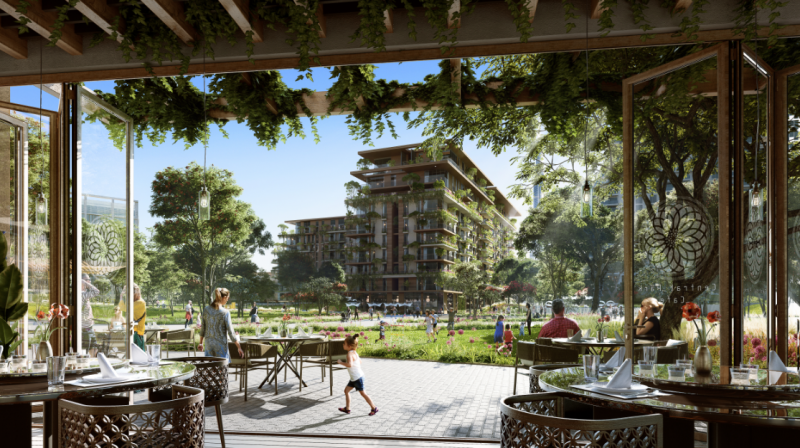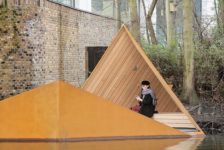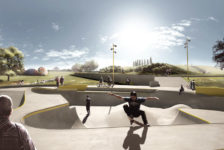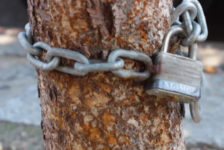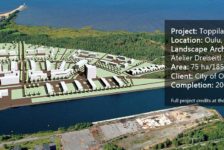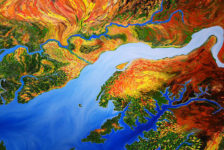There’s no question that the COVID-19 pandemic has made us question how resilient our cities are, both when it comes to the needs of their citizens and their preparedness for future crises. COVID-19 has forced us, and by extension, landscape architects and urban designers, to re-evaluate how and where we need to build community resilience to natural hazards and climate crisis.
Resiliency in urban environments is of the utmost importance—allowing both the city and its occupants to survive, adapt, and even thrive in times of stress and crisis. Designers at firms like global architecture firm CallisonRTKL must be focused on resilient planning and design solutions that provide flexible solutions that can continually adapt to our future needs, even as times and technologies change and develop.
THE FUTURE OF HIGH-DENSITY CENTERS
As we consider the impact of the pandemic on the high-density urban setting, we are seeing a desire for a more spread out, open environment, as well as one that is more flexible and adaptable to future change. Health and wellness are now top priorities, and as a result, more open habitats are now preferable to dense urban environments—having a direct effect on once busy urban business districts. Where once public transportation including trains and buses to those districts were the preferred mode of getting from point A to point B, for many, walking, biking, and driving cars have now emerged as ways citizens get around and continue to spread out within their city.
Furthermore, as people continue to work remotely and retool their lifestyle to what is now our new normal, more and more activities are moving online, and the need to travel to urban centers is becoming not as necessary as before. Instead, urban residents are looking more towards adaptable, flexible, mixed-use, and walkable urban environments to live in, work in, and take part in extracurricular activities. As a result, our cities—and those who design them—will have to adapt to reflect the changing needs of the community, and will need to be flexible in turn as those demands continue to evolve.
Important public spaces will also need to be within walking distance from people’s homes, providing easy access to crucial greenspace, which provides both environmental and social wellness benefits. Designers and landscape architects will need to reevaluate the current urban setting in which they work, and develop innovative and flexible design solutions that place the safety and wellbeing of residents first. New urban typologies must allow for and encourage safe social interactions—a truly resilient solution offers a quality experience while staying safe/protected.
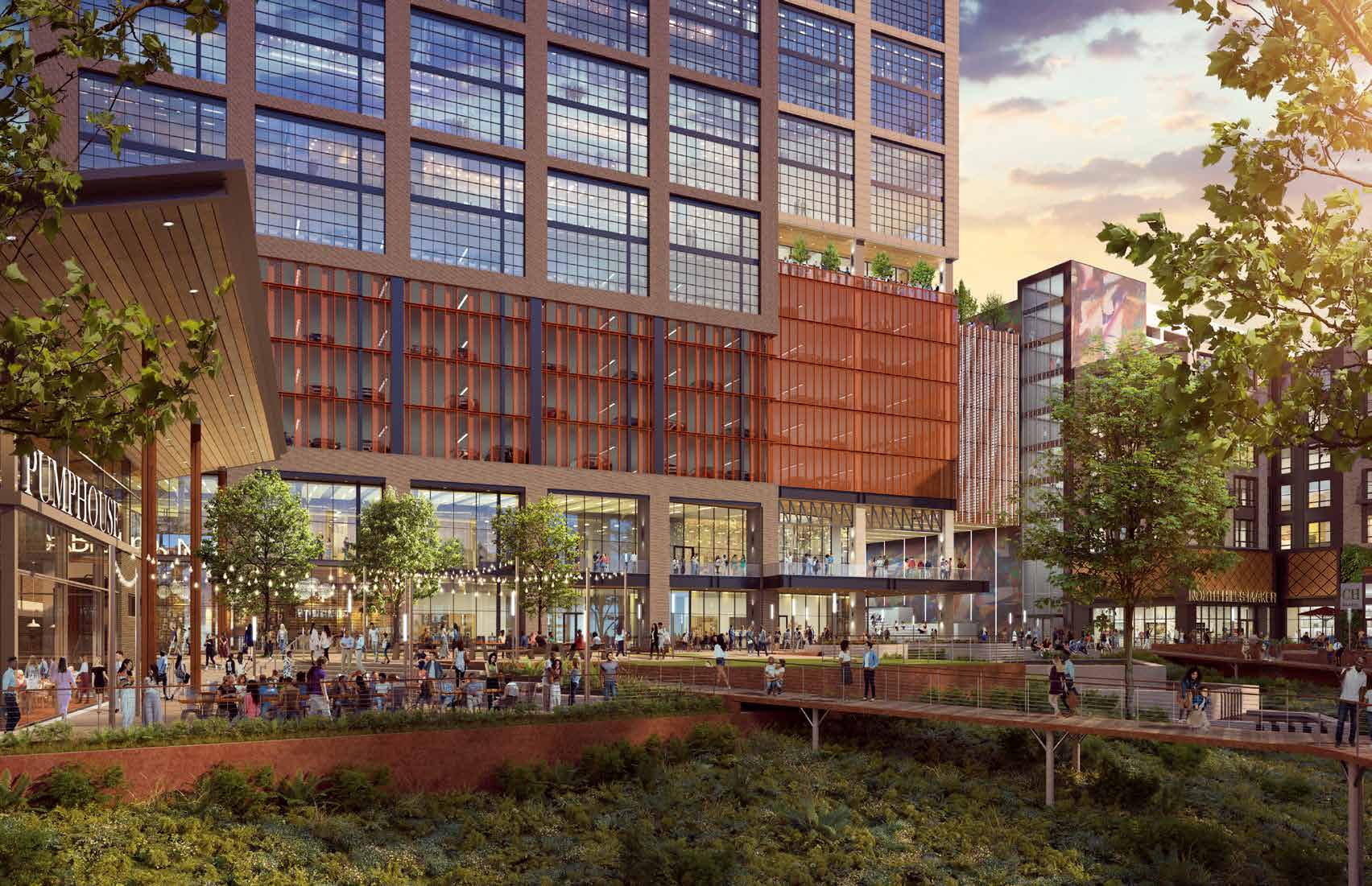
North Hills East; Image: CallisonRTKL
THE PIVOTAL ROLE OF OUTDOOR SPACE
Even before the COVID-19 pandemic hit on a global scale, many people reaped the benefits of the outdoors, both mental and physical. As the pandemic forced us into enclosed spaces for extended periods of time, the demand for those benefits has only increased. COVID-19 has brought to light that access to nature, greenspace and physical activity are not just amenities for inhabitants of major cities and those that surround them, but necessities. Going forward, cities must be designed in such a way that all residents have easy, ideally walkable access to outdoor space wherever they live and work. These are no longer transitional areas, but safe, wellness-supporting destinations, and people now expect them when seeking out a living space. Furthermore, creating greener and heavily planted spaces and using the principles of biophilia, can provide numerous health benefits to the users and simultaneously improve the quality of air, reduce noise pollution, and help combat the urban heat island effect in cities.
Outdoor spaces also support the pressing need to socialize amongst a city’s restless residents in the COVID-19 era. The ability to socialize in a safe, socially distanced way heavily relies on these spaces and the programming they can offer now more than ever. As the way we go about our routines continues to evolve, all types of venues—such as restaurants, bars, and theaters—are turning to the outdoors in order to prioritize visitor health without sacrificing experience. For example, New York City recently announced that they would make over 10,000 of their newly appointed “Streateries”—restaurants using street space to provide seating for outdoor diners—and 87 “Open Streets” a permanent fixture. Based on the city’s success with these pandemic-era solutions, designers are encouraged to make this happen on a larger scale, using street space for not only restaurants, but retail, seating, and more—all determined by the needs of the urban community.
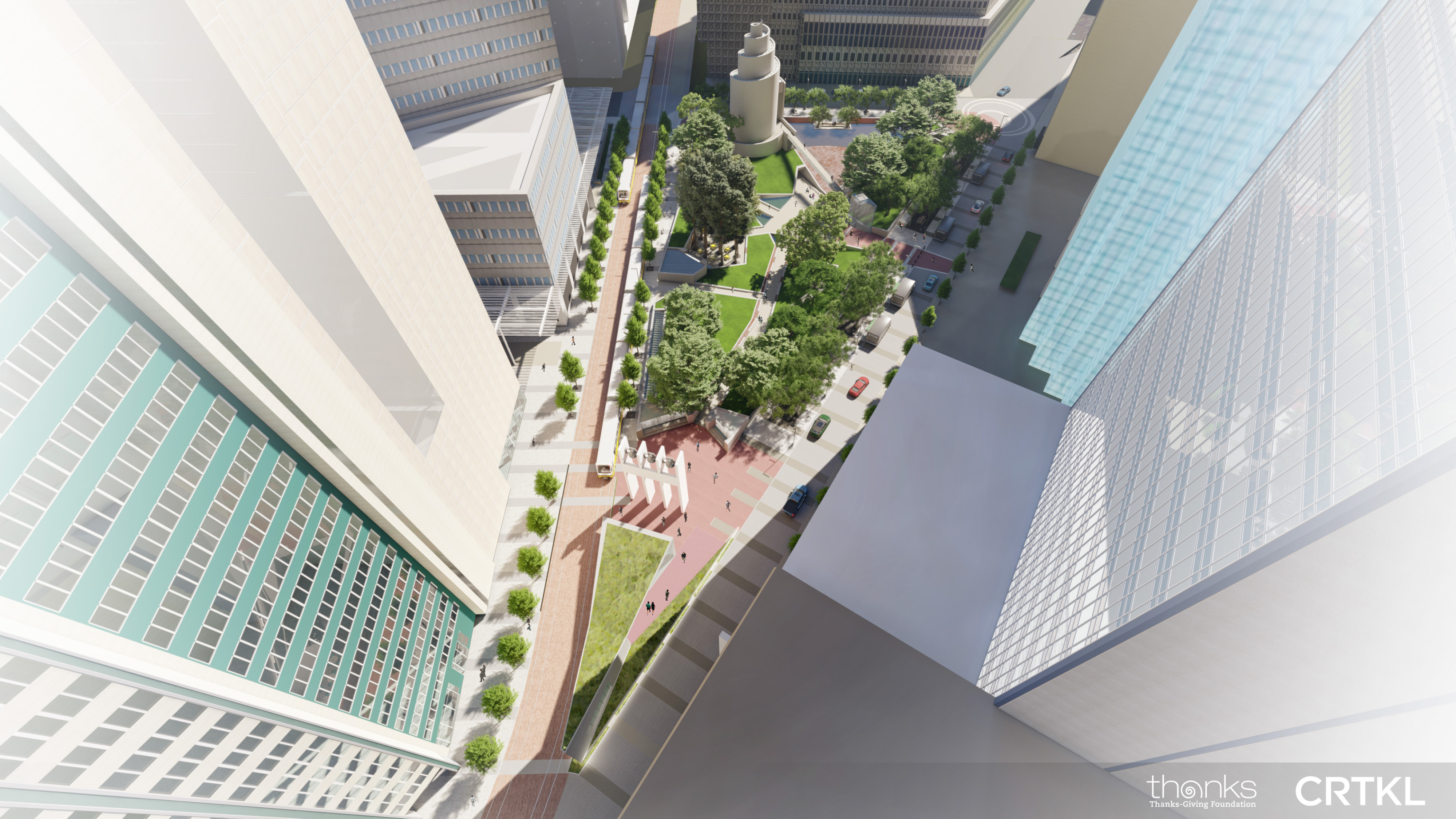
Thanksgiving Square; Image: CallisonRTKL
A PLAN FOR RESILIENCE
It is important for landscape architects and urban designers alike to approach the urban environments they plan as resilient from the beginning. A city must be able to effectively respond to the challenges faced from the pandemic and similar events, as well as our unpredictable climate, while accounting for citizens’ well-being and needs simultaneously.
Ideally, a successful and well-designed urban environment will facilitate human interaction, and be habitable, dynamic, and desirable. That said, a resilient city will take this one step further by being inherently safe, and ready to stand up to the myriad of challenges in our ever-changing world. With a steadily increasing emphasis being placed on health and safety, the onus is on the designer to ensure that spaces don’t become overly clinical, and instead, remain focused on unity and connectivity. In that same vein, is the integration of all-important technology into physical infrastructure, with smart, interconnected, micro-mobility, no-touch technology, self-sanitizing surfaces, and other digital solutions key to striking this balance in keeping our cities up-to-date in the years ahead.
LOOKING TO THE FUTURE
Change is constant, and the COVID-19 pandemic won’t be the last global crisis we face in our lifetime. It is the designer’s role to provide solutions to address the world’s evolving needs and put citizens top-of-mind. As our communities are being tested because of the various challenges presented, we need to act quickly and adapt flexible solutions that reimagine the urban realm. We must make sure that when the next disaster hits, we are best prepared to adapt and survive.
—
Lead Image: Central Park at City Walk, Dubai; CallisonRTKL



